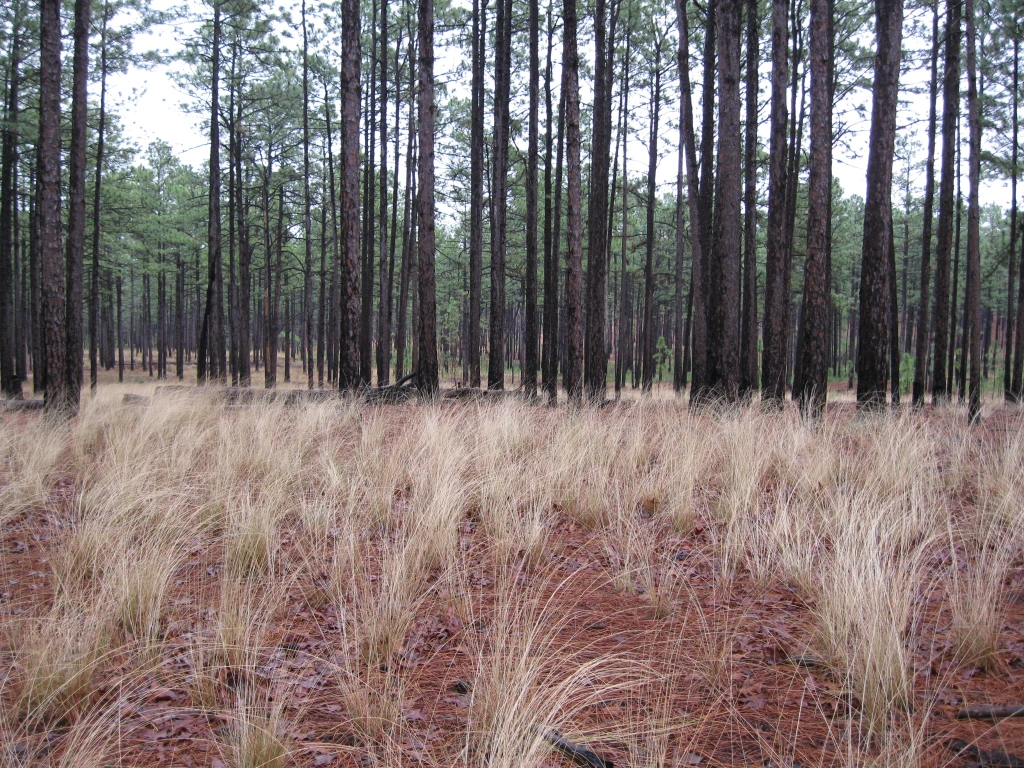
Tallgrass prairies
Tallgrass prairies harbor many plant and animal species of conservation concern and have been reduced to a small fraction of their historical extent. Considerable effort is being made to restore prairie grasslands in the Midwest and Central U.S. However, the outcome of particular restoration strategies can be highly unpredictable. Developing and testing community assembly theory can provide mechanistic insights into restoration practices and make them more effective. We are working to understand how the characteristics of species (functional traits) might predict their success in particular environmental conditions. In particular, we are interested in the role of seed size, dispersal ability, and stress tolerance in predicting species success under different climates and fire regimes.



Longleaf pine savannas
Longleaf pine savannas once occupied about 60% of the upland coastal plain from Virginia to Texas (60-70 million acres). The plant communities in longleaf pine savannas are one of the most species rich ecosystems in North America, often containing more than 30 species per square meter. Today, less than 3% of the original extent of longleaf pine remains because of agriculture, development, and the loss of the frequent, low-intensity fires that historically maintained them.
With funding from the Strategic Environmental Research and Development Program (SERDP) and with collaborators John Orrock (University of Wisconsin-Madison), Lars Brudvig (Michigan State University), and Joan Walker (USDA Forest Service-Southern Research Station), we are working to understand how local ecological processes (dispersal limitation, competition, consumers) interact with landscape context to influence plant community diversity, composition, and restoration at three sites across the Southeastern United States. A critical part of this project is to determine how agricultural land use history and fire regimes affect community assembly and recovery. With new funding from SERDP, we are now assessing the longer-term impacts of our restoration treatments over 5-10 years.





